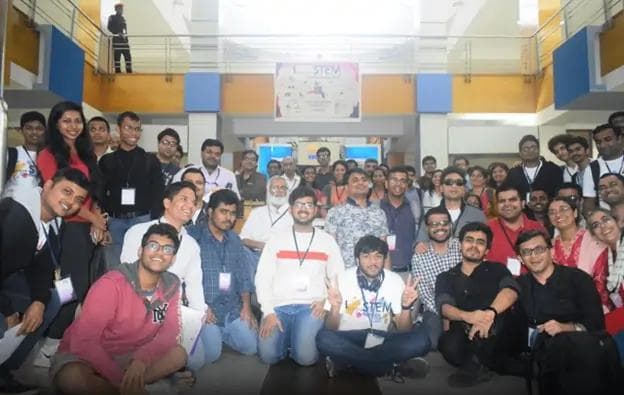AUTOMATION CAN HELP CREATE AN AGILE FINANCIAL ECOSYSTEM
AUTOMATION CAN HELP CREATE AN AGILE FINANCIAL ECOSYSTEM
Published by Gbaf News
Posted on June 9, 2017

Published by Gbaf News
Posted on June 9, 2017

Bhupender Singh, CEO ofIntelenet® Global Services says next generation tools can boost operational efficiency for finance executives
In any working environment, businesses form partnerships with multiple vendors, distributors and suppliers who support them in catering to the needs of their end customer.With this in mind, the financial management function needs to be well managed to ensure these networks can thrive, and that service commitment with various partners is maintained. Whether it’s dealing with invoicing and billing administration, customer query resolution or tax filing, these routine tasks can grind entire services to a halt if the processes do not run smoothly.
Advances in data software and automation are opening up avenues for businesses to generate valuable insights that can lead to major productivity improvements. Businesses should proactively identify and address key areas within their current finance management practices to help avoid financial risk or reputational consequences. Through a more robust approach, next generation tools can support businesses to better manage their financial activity and accurately plan, forecast, and budget to drive business growth.
Finance executives and CFOs are increasingly looking for solutions to spearhead financial transparency to gain a more holistic overview of their performance. Automation tools can lead to better and more informed decision-making and process improvements to drive positive financial outcomes. By working from a connected financial ecosystem allows decision makers to gain advisory and strategic insights to create a cost effective business strategy. Ultimately, innovative digital tools can drive businesses to stay focused on their growth and financial success.
The role of the accountant and finance executive is being redefined, allowing them to harness the power of technology to become smarter and redirect their focus on managing relationships with clients as opposed to the mundane repetitive tasks of inputting data. Manually inputting incorrect data into systems and errors in calculation can result in a very pricy mistake for businesses. One company lost out on £16.55m off net profits over the last three years as a result of accounting errors.[1]
Automating manual processes across different cost streams makes the number crunching process more streamline and efficient. It can increase the speed and quality of execution – in one business case it has processed 94% of the invoices within 2/3 days. We found, taking away human error and automating repetitive tasks helped one UK business recover £1.7 million which is caused by missing or incorrect documents. This can create brand value in financial management, where errors such as payroll and particularly tax filing have negative implications.
Many businesses currently work from siloed financial systems for different business processes makes it extremely challenging to understand their financial data. Using a fully integrated and modular architecture, the process of tracking and monitoring cost data, consolidates the information and removes the challenge of obtaining a transparent overview of where your money is going.
For financial services who operate under strict and defined regulatory environments, automation tools encourage better governance and accuracy. Migrating accounting tasks onto a cloud ecosystem is a new direction a lot of business leaders are taking.Cloud ecosystems allow them to receive up-to-date information related to compliance across various processors such as F&A, payroll, and taxation.
There is a lot of innovation within the finance and accounting space which is opening the door for finance executives to explore how they can harness the full potential of these new technologies to boost business-critical functions. Making the most of these innovative tools, requires expert skill and expertise from staff who are able to derive compelling and actionable insights to ensure the financial success of the business.
[1]https://www.theregister.co.uk/2014/02/05/tech_data_restatement_february/
Bhupender Singh, CEO ofIntelenet® Global Services says next generation tools can boost operational efficiency for finance executives
In any working environment, businesses form partnerships with multiple vendors, distributors and suppliers who support them in catering to the needs of their end customer.With this in mind, the financial management function needs to be well managed to ensure these networks can thrive, and that service commitment with various partners is maintained. Whether it’s dealing with invoicing and billing administration, customer query resolution or tax filing, these routine tasks can grind entire services to a halt if the processes do not run smoothly.
Advances in data software and automation are opening up avenues for businesses to generate valuable insights that can lead to major productivity improvements. Businesses should proactively identify and address key areas within their current finance management practices to help avoid financial risk or reputational consequences. Through a more robust approach, next generation tools can support businesses to better manage their financial activity and accurately plan, forecast, and budget to drive business growth.
Finance executives and CFOs are increasingly looking for solutions to spearhead financial transparency to gain a more holistic overview of their performance. Automation tools can lead to better and more informed decision-making and process improvements to drive positive financial outcomes. By working from a connected financial ecosystem allows decision makers to gain advisory and strategic insights to create a cost effective business strategy. Ultimately, innovative digital tools can drive businesses to stay focused on their growth and financial success.
The role of the accountant and finance executive is being redefined, allowing them to harness the power of technology to become smarter and redirect their focus on managing relationships with clients as opposed to the mundane repetitive tasks of inputting data. Manually inputting incorrect data into systems and errors in calculation can result in a very pricy mistake for businesses. One company lost out on £16.55m off net profits over the last three years as a result of accounting errors.[1]
Automating manual processes across different cost streams makes the number crunching process more streamline and efficient. It can increase the speed and quality of execution – in one business case it has processed 94% of the invoices within 2/3 days. We found, taking away human error and automating repetitive tasks helped one UK business recover £1.7 million which is caused by missing or incorrect documents. This can create brand value in financial management, where errors such as payroll and particularly tax filing have negative implications.
Many businesses currently work from siloed financial systems for different business processes makes it extremely challenging to understand their financial data. Using a fully integrated and modular architecture, the process of tracking and monitoring cost data, consolidates the information and removes the challenge of obtaining a transparent overview of where your money is going.
For financial services who operate under strict and defined regulatory environments, automation tools encourage better governance and accuracy. Migrating accounting tasks onto a cloud ecosystem is a new direction a lot of business leaders are taking.Cloud ecosystems allow them to receive up-to-date information related to compliance across various processors such as F&A, payroll, and taxation.
There is a lot of innovation within the finance and accounting space which is opening the door for finance executives to explore how they can harness the full potential of these new technologies to boost business-critical functions. Making the most of these innovative tools, requires expert skill and expertise from staff who are able to derive compelling and actionable insights to ensure the financial success of the business.
[1]https://www.theregister.co.uk/2014/02/05/tech_data_restatement_february/
Explore more articles in the Technology category











